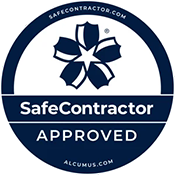Deposit safes can reduce losses from internal theft and protect your staff in the event of robbery.
| |
Locking
At SafeRunner.co.uk we believe that you should choose the best locking system available, dependent upon your particular budget. There is an extensive range of locks available as standard and also the option to customise
your safe or cabinet with a variety of different locks with a wide range of features. So whether it is the mechanical combination lock or a more hi-tech electronic solution, at SafeRunner.co.uk we are sure to have a lock
which will meet your security requirements. Please find below a quick guide to the options available.
Key Lock - A manual key operated lock with various types of keys available. These could be a Single or Double Bitted Key which have two lugs and
can only be copied from an original, cylinder keys that can only be copied from an original or even high security keys that are especially difficult to copy (even if you have the original)
Electronic Lock - An electronically operated keypad lock with a changeable combination that are normally powered by standard alkaline batteries.
Most electronic locks will have a low battery level indicator, but even if the battery is flat the internal memory of the lock will normally retain the user code. Electronic locks are both reliable and flexible as the code can be
normally be re-programmed as many times as required. Locks may have a set number of digits to be entered, several user variations, and may have a lock out feature when a set number of incorrect codes are entered. These locks can often be
used with key locks for added security.
Dial Lock - Sometimes referred to as a Mechanical Combination Lock, these are the classic turn dial locks often featured on safes in the movies.
The combination is usually changeable and variations can include 3 sets containing 2 digits i.e. 10-20-30 or 4 sets containing 2 digets i.e. 10-20-30-40. These locks can often be used in combination with key locks for added security.
Biometric Lock - The simplest locks to operate, these locks open your safe by swiping your fingerprint. Most biometric locks will allow
you to store several prints so that the safe can be opened by more than one person. These locks can often be used in combination with electronic or dial combinations for added security.
Override Key - This key will open a safe with an electronic lock in case you forget the code or if the batteries need replacing on the lock.
Time Delay - This feature allows for a pre-set delay between operating the lock and being able to open the safe. The operation may vary between lock types.
Time delay locks on safes will keep any cash not in the till, or not yet banked, safe from all but the most determined robbers.
Time Lock - Time lock allows the user to set periods during which the lock may be operated. Timer controlled safes add extra security by ensuring that the safe cannot be opened outside pre-determined hours.
For instance, you may only wish the safe to be opened during business hours only and not at weekends. These locks can only be altered by an authorised user as required.
Audit Trail - The lock is able to give a report (it will vary in detail from model to model) of usage and may show times of operation, codes used and operations performed.
Duress Feature - It is possible for an alarm engineer to link the lock into a monitored alarm system. It is then possible, by a given procedure, to operate the lock, open the safe and
silently signal to the monitoring station that this is being done under duress.
Manager Mode or Master Code - Allows one user to control the functions of other combination holders or a single override entry function.
Dual Control/Operation - Allows two users to enter their details before any operation can be performed.
|


